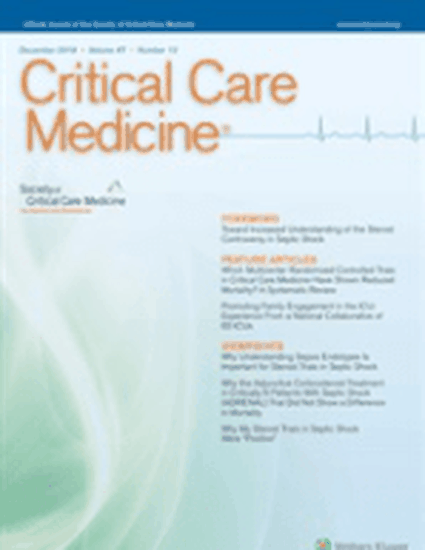
Article
Recognition and prevention of nosocomial vascular device and related bloodstream infections in the intensive care unit
Critical Care Medicine
(2010)
Abstract
Central venous catheters have become a mainstay in the care of critically ill patients but, unfortunately, are associated with a significant risk of bloodstream infections. There are 80,000 catheter-related bloodstream infections that occur annually in the United States, with a high human and financial cost. This paper reviews the main tools for prevention and diagnosis of central venous catheter-related bloodstream infections in the intensive care unit. We discuss specific aspects of prevention, including education, hand hygiene, sterile technique, skin cleansing, choice of catheter site, antimicrobial-impregnated catheters, catheter site dressings, antibiotic lock solutions, anticoagulation, catheter changes, and needleless connection devices. An analysis of studies evaluating the use of catheter “bundles” is also included. Diagnostic methods discussed include how to obtain blood cultures, when to culture catheter tips, how to interpret culture results, and the best methods for diagnosis
Keywords
- practice central venous catheter,
- bloodstream infection,
- prevention,
- diagnosis,
- bundles,
- lock solutions,
- antimicrobial-impregnated catheters,
- catheter dressingsSciences
Disciplines
Publication Date
August 1, 2010
DOI
10.1097/CCM.0b013e3181e6cdca
Citation Information
Chittick P, Sherertz RJ. Recognition and prevention of nosocomial vascular device and related bloodstream infections in the intensive care unit. Crit Care Med. 2010 Aug;38(8 Suppl):S363-72. doi: 10.1097/CCM.0b013e3181e6cdca. PMID: 20647794.
